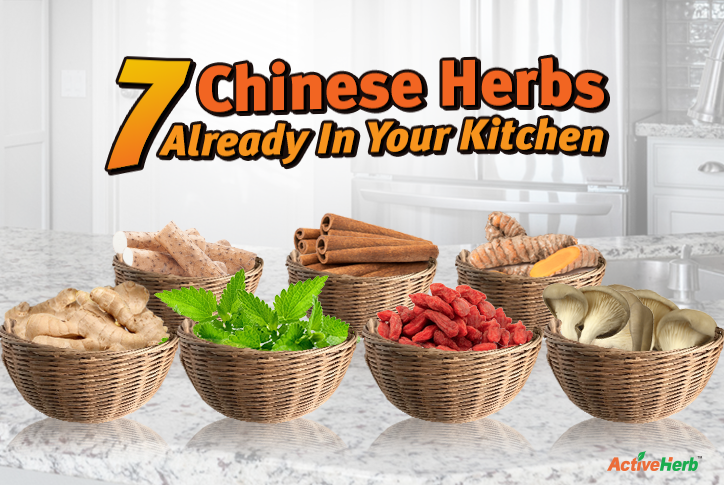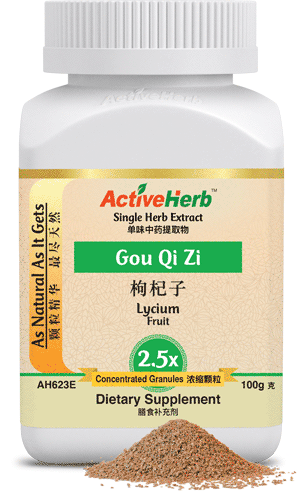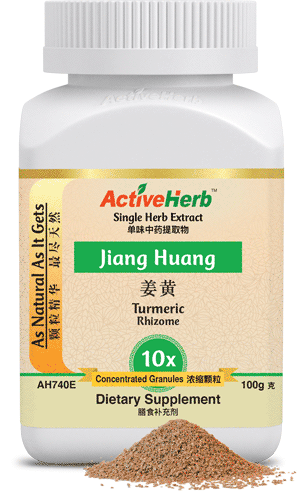7 Chinese Herbs Commonly Found in American Kitchens

One of the most famous quotes about health, if not one of the most famous quotes in all of history is, “Let food be thy medicine and medicine be thy food.”
The quote is attributed to the Greek physician, Hippocrates (5th-4th centuries B.C.E.), and implies that the best way to prevent illness or disease is through nutrition. But even centuries before Hippocrates supposedly coined the quote, ancient Chinese healers were prescribing nutritional therapy as a means for balancing Yin-Yang energies, nourishing the Blood and so forth.
In the West, we often think of Chinese herbs as supplements. However, some of the most common Chinese medicinal herbs are also used quite regularly in cooking. While it’s true that many medicinal Chinese herbs are esoteric and exotic-sounding (Pseudostellaria Root, Sweetflag Rhizome and Cnidium Fruit, for example), several of these top medicinal culinary herbs are probably already a staple in your own kitchen.
Here are some of the most common traditional Chinese herbs that can be found in American kitchens.

Ginger
There is perhaps no other traditional herb that’s used in Chinese cooking more often than ginger. Virtually every stir-fry dish, dipping sauce and soup recipe calls for it.
If you’re constantly running cold and your skin is on the pale side, getting enough ginger in your diet can help warm your body up, due to its Yang-stimulating properties. Not only will ginger (Sheng Jiang) help warm you up, it also disperses excess cold.
Ginger, in TCM, releases the exterior, which means it can help support your first line of defense of the immune system by transforming phlegm caused by excess internal dampness.
Even if you’re already healthy, it’s a good idea to make sure you’re getting your daily dose of ginger to support your immune system.
Ginger is ideal in the winter as an ingredient in soup. But you can get the benefits of fresh ginger year-round, the easiest way, in the most concentrated form, by making a tea.
Just ½ gram (one-tenth of a teaspoon) of fresh ginger granules contains a 6X concentration of fresh ginger extract.
Cinnamon
In the West, people sprinkle a dash of cinnamon on oatmeal, yogurt or tea. But in China, “Gui Zhi” (cinnamon twig) is used in many recipes that call for 5-spice powder (which also includes cloves, fennel, star anise, and peppercorns).
Like ginger, cinnamon can be used to fortify Yang and disperse cold. It’s also used in TCM to support circulation and blood sugar.
If you just sprinkle a dash of cinnamon in your coffee, tea or oatmeal, it’s certainly better than not consuming any of this spice. However, to maximize the potential benefits, make cinnamon tea with this 12X concentration of granules.
Goji berries
It seems that goji berries were added to the A-list of trendy superfoods in the West only within the last decade. However, goji berries (or “wolfberries” as they’re also known) have been consumed in China for at least 2000 years.
Marketed as an antioxidant-powerhouse in the West, in traditional Chinese medicine, Gou Qi Zi, as the fruit is known in China, nourishes and tonifies the Liver and Kidneys, which supports the body’s detoxification. Goji berries are also traditionally used to support vision.
In the West, most people who buy goji berries eat them as a stand-alone snack, or in salads. However, in China, the berries are usually not eaten raw. Rather, they are cooked and featured in pork, chicken and veggie stir-frys. Goji berries are also an ingredient in tea.
Rather than buying expensive bags of goji berries, you can get the benefits from this superfood by making your own tea with goji berry extract granules. Just 2 grams per serving (approx. ½ teaspoon) is all it takes to get your daily dose of goji berries.
Mushrooms
Some edible mushrooms are considered among the most functional foods Earth. High among the list is the variety of fungus, Reishi (Ling Zhi). Known as the king of mushrooms in China, reishi mushrooms are featured prominently in teas and soups.
In TCM theory, reishi tonifies overall Qi energy, and calms the spirit and is very nourishing to the Heart organ system, which controls all the other organs, according to TCM theory.
If you don’t enjoy sinking your teeth into the fleshy texture of mushrooms, you can get the health benefits from reishi without swallowing chunks of the fungus, thanks to this granule extract.
Wild Yam
Yams shouldn’t be regarded as a vegetable for Thanksgiving and winter holidays. This nutritiously-dense vegetable may offer numerous health benefits, regardless of what season it is.
In traditional Chinese medicine, the underground stem of the veggie (the rhizome) is used to tonify the Spleen and nourish the Stomach, thereby improving digestion and balancing Qi. Wild yam (Shan Yao) is also used to nourish the Lungs, generate fluids as well as benefit the Kidneys and prevent aging.
As for its applications in the West, wild yam extract is used in alternative medicine, in bio-identical hormone therapy.
Even on a hot summer day, you can get the benefits of wild yam by making an iced tea with Shan Yao granule extract.
Mint
In the U.S., most people associate mint with chewing gum or as a natural additive to refreshments such as iced tea. But passionate cooks are well aware that the herb supplies refreshing notes and a cooling element to sweet and spicy dishes.
In traditional Chinese medicine, Bo He (peppermint) is also used for its cooling nature. The herb expels wind heat, clears the head and the eyes, and vents rashes.
You don’t have to add peppermint to your dishes to get the medicinal benefits from this herb. Come to think of it, adding a few sprigs of peppermint probably won’t boost your health.
On the other hand, making your own peppermint tea with granules is the best way to cool your body down. Enjoy it hot or cold.
Turmeric
The myriad health benefits of turmeric are becoming increasingly known. As a result, more people in the west are adding the yellowish spice to their dishes, rather than just buying it in capsule form.
In culinary applications, the yellowish spice is more associated with Indian curry dishes. Indeed, turmeric is not exactly a staple in Chinese cuisine. However, its usage as a medicinal herb in Southeast Asia dates back at least 2000 years.
Perhaps no other medicinal herb has been studied more frequently than turmeric and its main active ingredient, curcumin.
In traditional Chinese herbal applications, turmeric is used to break up blood stasis and move the Qi. The result of these two actions is that meridians are unblocked and discomfort is mitigated.
While you can easily take a turmeric supplement, many experts believe consuming it in its natural form is superior.
Turmeric granule extract is one of the easiest and most affordable ways to buy this legendary culinary herb in its natural form. All you do is mix a half gram a couple times a day in hot water (or yogurt). We supply the measuring spoon with all our granule extracts. Easy peasy!
Medicinal Herbs Already In Your Kitchen: Conclusion
These are by no means the only medicinal herbs that might already be in your kitchen. Try incorporating just a few of these in your diet on a daily basis to support your health and well-being.







